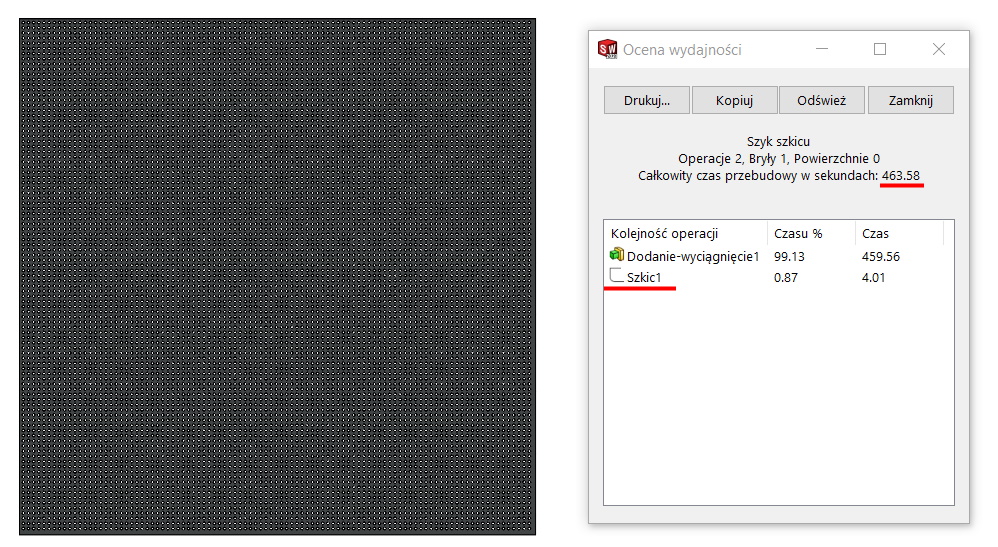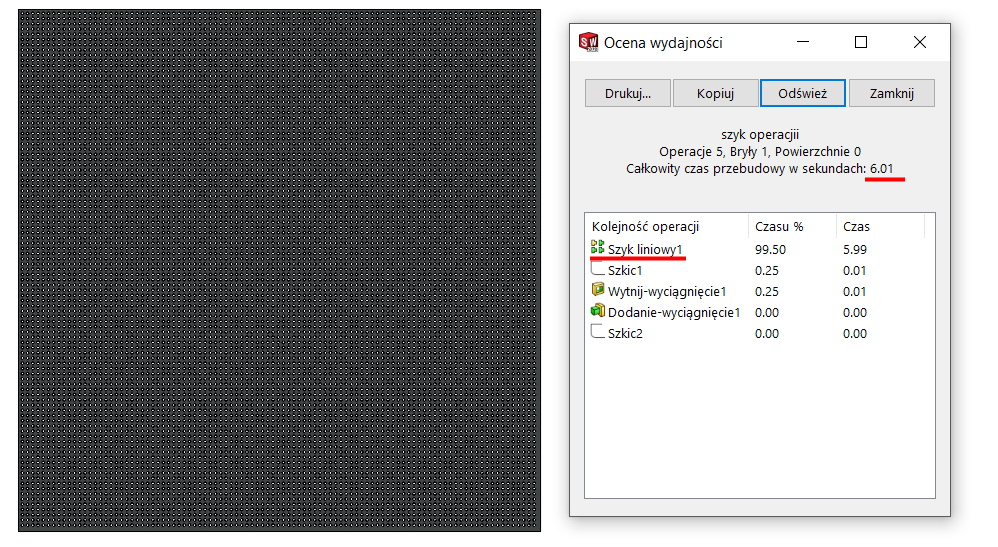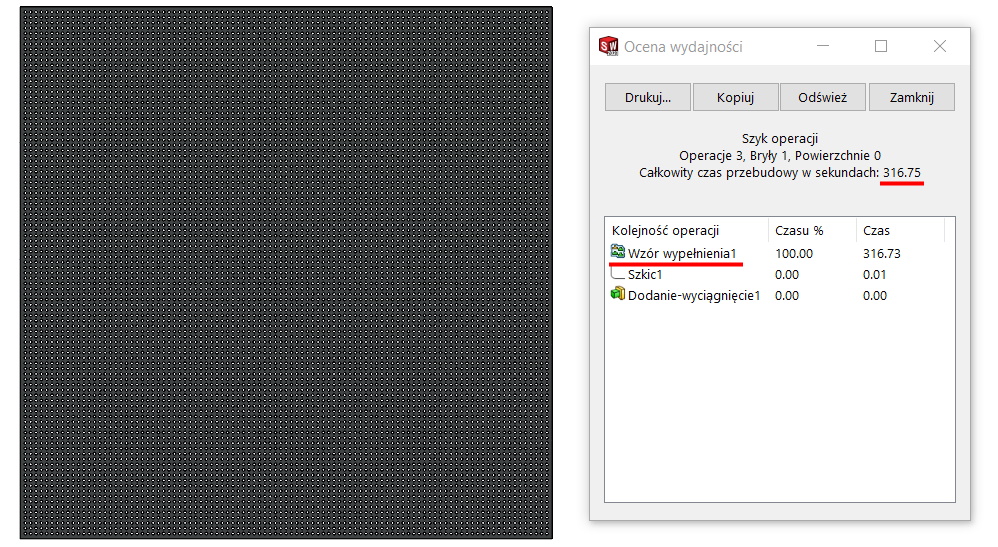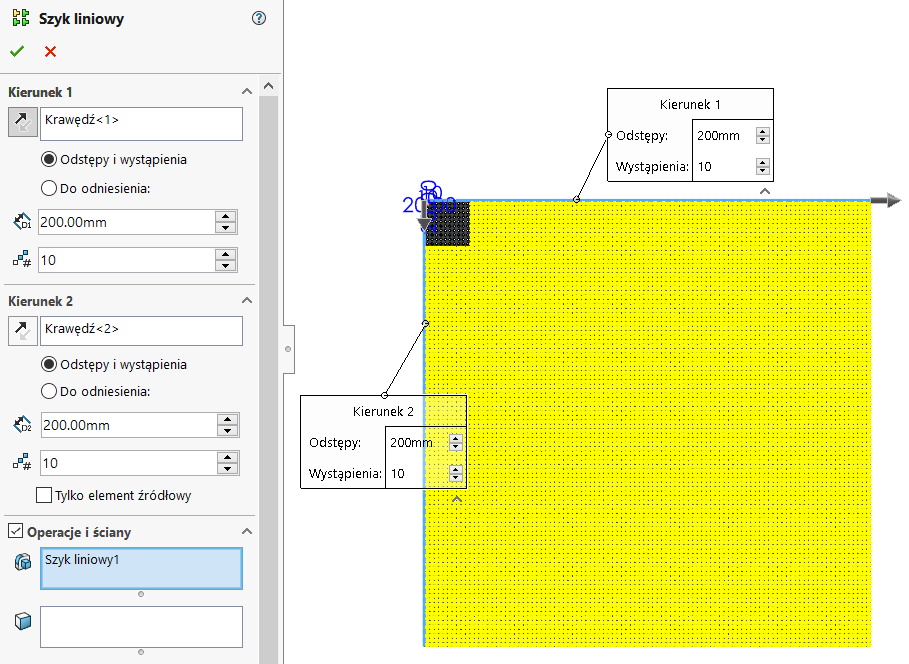Do you know, that… ?
Efficiency in design plays a vital role. Therefore, it is very important to skillfully create an operation.
Some time ago I wrote about the effect of different types of threads on performance. You can read about it below.
This time I'll show you, How different patterns affect performance.
Patterns are generally very memory-hungry, and if possible, do them
- Sketch Pattern. This is the least efficient method. It consists in the preparation of a single sketch, then duplicating it with the sketch pattern and performing the feature. I don't really notice the advantage of this style. Disadvantages: worst performance, no tree operation (enabling e.g.. extinction), limited control and editing options.

2. Array of operations. The most efficient method with many control options.

3. fill pattern. It is also a type of pattern that allows you to arrange instances in a rectangular layout, circular or alternating (perforation). The performance of this pattern is close to the feature's linear pattern. The pattern allows you to offset occurrences from the boundary, limitation of occurrences by sketch and calculation of the number of repetitions.

In addition to performance, I also compared file sizes.
It is as follows:

It's good to remember the rule, where the chic can be turned off – it should be done. For example,, by inserting a plate with 2000 holes to be assembled, can be created simplified configuration, where the holes are blanked out. From an assembly standpoint, the holes are not essential.
And finally, interesting information. Having a chic with really many appearances to do, e.g. 10000×10000, it is better to divide it into two or three smaller arrays, 100×100 then this pattern is duplicated in the next pattern.

